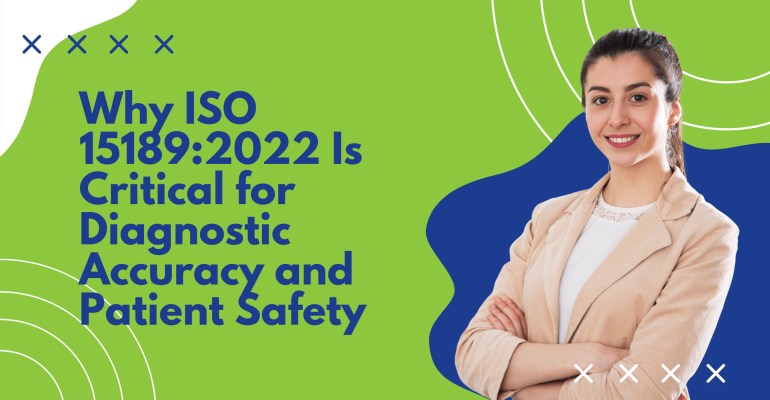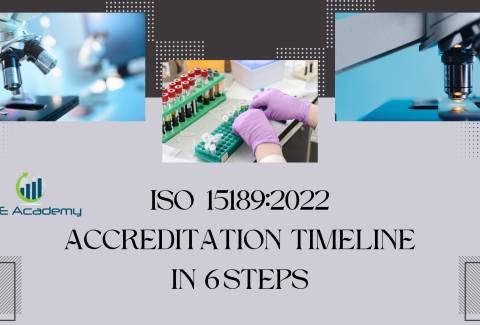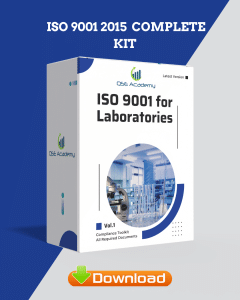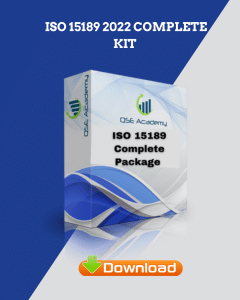Why ISO 15189:2022 Is Critical for Diagnostic Accuracy and Patient Safety
Last Updated on October 22, 2025 by Hafsa J.
Why ISO 15189:2022 Is Critical for Diagnostic Accuracy and Patient Safety
Let’s be real—most labs don’t wake up thinking, “Today’s the day I dive into ISO 15189:2022.” More often, it’s triggered by an audit deadline, a regulatory push, or a problem that hit too close to patient care.
I’ve worked with medical labs across hospitals, diagnostics centers, and public health agencies for over a decade now. And here’s what I’ve noticed: the ones that treat ISO 15189 like a checklist struggle to see the value. But the labs that understand why it exists? Those are the ones that grow stronger, safer, and more respected over time.
This 2022 update isn’t just a technical revision. It’s a reset. It puts diagnostic accuracy and patient safety right at the center of your quality system—where they’ve always belonged.
In this article, I’ll walk you through exactly why ISO 15189:2022 matters so much. Not just from a compliance standpoint, but from a real-world, patient-outcomes perspective. You’ll see how this standard helps reduce errors, strengthen your lab’s credibility, and build a system that doesn’t fall apart under pressure.
If you’re responsible for lab quality—or even just trying to make sense of where ISO fits into your day-to-day—this is for you.
Let’s get into it.
Diagnostic Accuracy Starts with System Integrity
If there’s one thing I’ve learned working with diagnostic labs, it’s this: even the smartest team can’t deliver reliable results without a solid system behind them. You can have the best equipment, the most experienced staff—but if your processes aren’t consistent, things slip through the cracks.
That’s exactly what ISO 15189:2022 is built to prevent.
This version of the standard tightens up every part of the testing process—from how samples are collected and labeled, to how results are validated and reported. It’s not about adding red tape. It’s about protecting your lab’s credibility and your patients’ lives.
Let me give you a real example.
I worked with a lab last year that was dealing with a pattern of mislabeled specimens. Nothing major, but enough to raise red flags with their clinical partners. After digging in, we found out they didn’t have a consistent check-in procedure during high-volume shifts. Simple fix—but the impact was huge. Once they implemented barcode verification and a second-person cross-check (both aligned with ISO 15189 practices), their error rate dropped by nearly 40% in three months.
That’s what we mean by system integrity. You don’t wait for things to break—you build a process that prevents problems from happening in the first place.
Why it matters:
-
You reduce the chances of diagnostic errors.
-
You build trust with physicians and clinicians who rely on your results.
-
You spot weak links early—before they affect patients.
ISO 15189:2022 Puts Patient Safety Front and Center
Here’s the truth most people don’t say out loud—when something goes wrong in a lab, the paperwork might take the hit, but it’s the patient who really suffers.
That’s why I’m glad the 2022 version of ISO 15189 doesn’t just hint at patient safety—it makes it a core priority.
In my experience, labs that own this responsibility—rather than just reacting to errors—see fewer incidents, stronger clinical relationships, and far less stress during audits. Because let’s face it: safety isn’t a department. It’s a mindset.
So what does this look like in real life?
Take one of my client labs at a regional hospital. They had a solid system for routine testing but were struggling with how to handle critical results—especially during night shifts. After walking them through ISO 15189:2022, we implemented a risk-based escalation procedure for high-alert values like potassium and troponin.
It was simple: flag the result, verify it fast, and notify the clinician within 15 minutes.
What changed? The lab staff had a clear protocol, clinicians started trusting the lab more, and the quality manager finally stopped getting those 2 a.m. complaint calls. That’s patient safety in action.
The 2022 standard requires:
-
Risk management to identify where harm could happen before it does.
-
Clear protocols for reporting critical results—quickly and consistently.
-
Processes for investigating incidents that do happen, so they don’t happen again.
And the best part? When you build your systems around patient safety—not just compliance—you naturally improve your lab’s performance across the board.
Why Risk-Based Thinking Changes Everything
Let’s be honest—“risk-based thinking” sounds like something cooked up in a boardroom. But in a busy lab? It’s actually one of the most practical tools you can have.
Here’s what I’ve noticed after guiding labs through the 2022 transition: the ones that get risk-based thinking early on tend to have fewer surprises, fewer audit findings, and far more control over their day-to-day operations.
Because let’s face it—every lab has weak points. It might be a fragile supply chain, a single instrument that’s overdue for maintenance, or a process that falls apart when your senior tech takes a day off. Risk-based thinking simply means spotting those issues before they lead to diagnostic errors or delays.
Here’s a real-world example.
A genetics lab I worked with had just installed a new PCR platform. Everything looked great—until we mapped out their risks during an ISO 15189 implementation review. Turned out, they hadn’t fully validated their extraction kits with the new setup. That one oversight could’ve affected test accuracy for weeks before anyone caught it.
By building a simple risk register, they flagged the gap, ran a few extra controls, and documented everything. Crisis avoided. And come audit time? They passed with zero findings.
How ISO 15189:2022 embeds risk into your quality system:
-
You’re expected to identify potential failures—from staffing to reporting to supply management.
-
You need to assess the severity and likelihood of those risks—not just list them.
-
And most importantly, you must act on them—with control measures, documentation, and periodic reviews.
This is important because it shifts your lab from being reactive to being proactive. Instead of waiting for an error to happen and scrambling to fix it, you’re anticipating what could go wrong and building in safety nets.
Competence and Training: The First Line of Defense
In every lab I’ve worked with, no matter how advanced the technology or how detailed the SOPs, it always comes back to one thing: people.
Your lab techs, analysts, and supervisors are the ones running the tests, spotting the red flags, and making split-second decisions that impact patient care. And if they’re not properly trained—or worse, trained once and forgotten—you’re opening the door to real risk.
ISO 15189:2022 doesn’t just require that staff have qualifications. It emphasizes that their competence is evaluated, maintained, and continuously improved. That’s a big shift. It’s no longer enough to hand someone a training checklist and move on.
Here’s how this played out for one of my clients.
A diagnostic center was getting hit with a lot of pre-analytical errors—mislabeling, sample rejections, that kind of thing. On paper, their staff were “trained.” But when we did a walkthrough, it became clear that their onboarding was rushed and their refresher training… didn’t exist.
So we built a simple training program around ISO 15189’s expectations—initial training, periodic assessments, peer reviews, and documented observations. Within six months, their pre-analytical error rate dropped by 25%.
That’s the kind of improvement that protects both your results and your reputation.
What the standard expects you to do:
-
Clearly define what “competence” means for each role in your lab.
-
Provide initial and ongoing training—not just once a year.
-
Document performance evaluations, observations, and corrective actions.
And let’s be clear—this isn’t about micromanaging your team. It’s about giving them the confidence and clarity they need to do their jobs well.
When everyone knows what “right” looks like—and has the tools to stay sharp—your lab runs smoother, audits go better, and patients get safer, more accurate results.
Internal Audits and Continuous Improvement
Let’s be honest—when most labs hear “internal audit,” they think paperwork, pressure, and maybe a little panic. But in labs that really get ISO 15189, internal audits are where the real improvements start.
Here’s what I tell every lab I work with: don’t wait for your external auditor to find problems. Use your internal audits to catch them early, fix them fast, and improve systems before anyone else even notices.
A quick story from the field:
I worked with a midsize hospital lab that had chronic delays in reporting test results. They assumed it was due to staff shortages. But during their ISO 15189 internal audit (which we helped revamp), they traced the bottleneck to a poorly documented backup process for equipment downtime. Nobody owned it, and it wasn’t part of their training plan.
We added a formal downtime protocol, ran a couple of drills, and gave one team member clear responsibility. Result? Their turnaround times improved by 18% in just two months—and they caught the issue themselves, before it showed up in an external audit.
What ISO 15189:2022 wants you to do differently:
-
Treat internal audits as tools for learning, not just compliance.
-
Make sure audits are planned, risk-based, and meaningful—not just a yearly ritual.
-
Use audit findings to feed into corrective action and long-term improvement—not just fix the surface issue.
And if you want to take it a step further, get your team involved in the audit process. Rotate responsibilities. Ask fresh eyes to audit different sections. You’ll be surprised how much more insight you get when people aren’t just following a script.
Because here’s the thing—audits aren’t about blame. They’re about building a lab that gets a little better, every single day.
POCT Oversight: It’s Your Responsibility Now
Here’s a reality check I’ve had to give more than a few clients lately: if your lab is linked to Point-of-Care Testing (POCT), you’re responsible for the quality of those results—even if someone else is pushing the buttons.
And under ISO 15189:2022, there’s no more gray area.
I’ve seen this trip up labs in hospitals, clinics, and even mobile health programs. They assume that if nurses or remote staff are running glucose meters or pregnancy tests, it’s outside the lab’s scope. But guess what? If your lab validates those results, manages the equipment, or even oversees training—you’re on the hook.
Let me give you a real example.
A hospital client of mine had over a dozen POCT devices spread across their emergency department, ICU, and outpatient clinics. Nurses were using them daily, but there was zero central oversight. When we reviewed their ISO 15189 readiness, it became clear: no standardized training, no internal QC checks, and no documentation of result verification.
That’s risky.
We helped them develop a POCT oversight program—nothing fancy, just clear roles, training logs, regular performance checks, and a simple audit schedule. Within weeks, errors dropped and clinicians started calling the lab before a device acted up. That’s quality in action.
What ISO 15189:2022 expects regarding POCT:
-
You must ensure staff using POCT are trained and competent.
-
Devices should follow the same quality control and maintenance procedures as in-lab equipment.
-
POCT results must be traceable, reliable, and included in your overall quality system.
So even if the testing isn’t happening in your main lab, if it touches patient care—and your lab has any oversight role—it falls under your responsibility.
The upside?
With proper oversight, POCT becomes a powerful extension of your lab—not a liability. But only if you treat it like part of your quality system, not a separate world.
Pro Tips and Insider Insights
By now, you’ve seen how ISO 15189:2022 isn’t just about checking boxes—it’s about protecting patients, sharpening your systems, and building a lab you can trust under pressure.
Over the years, I’ve worked with labs of every size and specialty. And while each one is different, a few key strategies consistently separate the smooth implementations from the painful ones.
Here are the tips I always share with my clients—because they work.
Pro Tip 1: Don’t Treat It Like a Documentation Project
“Yes, the paperwork matters—but it’s the process behind the paperwork that really counts. I’ve seen labs pass audits with lean documentation because their systems were airtight. And I’ve seen beautifully organized binders fall apart under questioning because no one followed the process.”
Start with reality—then build documents that reflect what actually happens.
Pro Tip 2: Risk Registers Work Best When They’re Used Monthly, Not Annually
“One of the best labs I’ve worked with reviewed their risk log every single month during their quality meetings. They added new issues as they popped up—supply shortages, new instruments, unexpected delays—and closed the loop on previous risks. No guessing during audits. No scrambling.”
Don’t let your risk register collect dust. Use it as a living tool.
Pro Tip 3: Rotate Internal Auditors to Get Fresh Eyes on Old Problems
“I once helped a lab that hadn’t caught a recurring sample rejection issue in over a year—until they rotated their internal audit team. Someone new asked one simple question, and the dominoes fell.”
When the same person audits the same area year after year, they stop seeing the cracks. Rotate responsibilities.
Pro Tip 4: Own Your POCT Oversight—Even If It’s Outside Your Walls
“If a patient’s care relies on that result, you’re responsible for its quality. I tell every lab to treat POCT like it’s happening in-house. Because if something goes wrong, that’s exactly how it’ll be treated.”
Put a simple structure in place: basic training, routine checks, clear documentation. That’s all it takes to stay in control.
Pro Tip 5: Make Competence Reviews a Two-Way Conversation
“Some labs treat training assessments like school exams. But the best ones use them as learning opportunities. I’ve seen staff go from resistant to engaged just because they felt heard during evaluations.”
Ask your staff what training they think they need. You’ll uncover gaps you didn’t know existed—and you’ll build a stronger team.
Whether it’s ISO 9001, ISO 22000, or the cosmetics-focused ISO 22716, I’ve spent my career I’m not here to call myself an expert—I prefer “enthusiast” because I truly love what I do. When I’m not writing about standards, you’ll probably find me playing Piano 🎹, connecting with people, or diving into my next big project💫. I’m an engineer specialized in the food and agricultural industry
make ISO standards less intimidating and more approachable for everyone.
turning complex jargon into clear, actionable steps that businesses can actually use.
There’s something incredibly rewarding about helping people navigate food safety and quality management systems
in a way that feels simple, practical, and even enjoyable.
I have a Master’s in QHSE management and over 12 years of experience as a Quality Manager
I’ve helped more than 15 companies implement ISO 9001, ISO 22000, ISO 22716, GMP, and other standards
My clients include food producers, cosmetics manufacturers, laboratories, and service companies
I believe quality systems should be simple, useful, and efficient.












